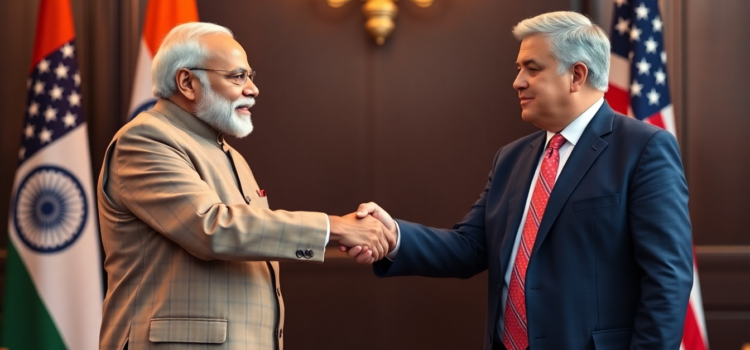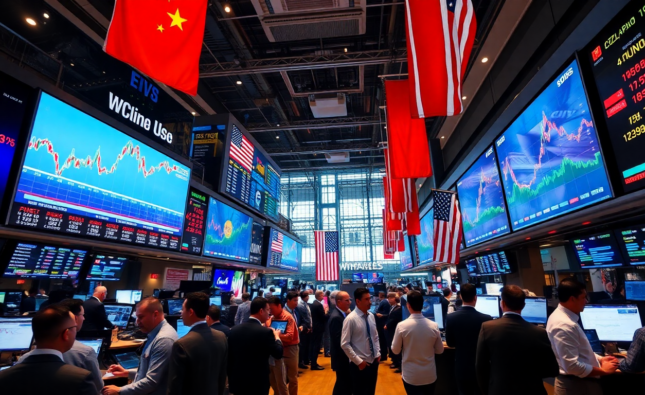
PM Modi and JD Vance Welcome Significant Progress in India-US Trade Talks
The dialogue between the world’s two largest democracies took a promising turn as PM Narendra Modi and US Vice President JD Vance announced “significant progress” in the ongoing trade negotiations. With an ambitious goal set to elevate bilateral trade, stakeholders watch closely, amidst challenges posed by potential tariffs stemming from the Trump administration’s earlier policies.
Introduction
Could this be the beginning of a historic transformation in India-US trade relations? The recent announcement from PM Modi and US Vice President JD Vance signals a mutual aim towards a groundbreaking bilateral trade agreement. With a target to double trade and achieve a staggering $500 billion by 2030, both nations are steering their economic strategies in a direction that promises enhanced supply-chain integration and significant job creation opportunities. This development arrives as negotiations remain influenced by the looming 90-day pause on proposed US tariffs.
Progress in India-US Bilateral Trade Agreement
The agreement’s framework emerges as a symbol of strategic cooperation in the realm of international trade. Initial advancements were fortified by both nations finalizing the terms of reference, ensuring a foundation for a robust trade pact aimed at redefining economic collaboration. The India-US bilateral trade agreement progress 2025 emphasizes the mutual commitment to expanding market access and harmonizing regulatory standards, setting a precedent for future negotiations.
Dealing with Tariff Threats and Reciprocal Tariffs
Amidst this backdrop, the negotiations face the immediate challenge of impending tariffs as the Trump administration’s pre-existing program suggests a significant hike to 26% on Indian exports. India is actively considering tariff reductions on more than 30 products to foster a constructive environment and avert reciprocal tariffs. This strategic move aims to enhance defense and energy procurement from the US, indicating India’s readiness to embrace a symbiotic economic relationship.

Roadmap for Achieving a Comprehensive Trade Deal
The trajectory for reaching the desired trade target involves rigorous diplomatic engagement and strategic policymaking. Scheduled high-profile visits by US President Trump and senior officials underscore the importance of this agreement as a cornerstone of economic priorities US India trade pact. India aspires to conclude the first phase by autumn, as highlighted by Finance Minister Nirmala Sitharaman, setting a proactive tone for the upcoming phases.
- Promotion of job creation and citizen welfare through the bilateral trade agreement.
- Mitigation of tariff threats with a focus on a favorable trade balance.
- Enhancement of supply-chain integration and advanced technology imports.
- Alignment with ‘Make in India’ and ‘Atmanirbhar Bharat’ policies.
Conclusion
As significant strides are made in the trade talks India and US bilateral agreement, the overarching aim of placing both economies on a resilient growth trajectory is increasingly attainable. The roadmap laid by PM Modi and JD Vance sets the stage for a transformative era in bilateral ties, empowered by shared economic objectives and strategic partnerships.
Engage with this pivotal development by commenting on your thoughts and subscribing for regular updates on the progression of India-US trade policies.
FAQ Section
What are the key objectives of the India-US bilateral trade agreement?
The agreement focuses on doubling bilateral trade by 2030, promoting job creation, enhancing supply-chain integration, and mitigating tariff threats.
How is India addressing the tariff threats posed by the Trump administration?
India is planning to lower tariffs on over 30 items while increasing purchases of US defense and energy products, aiming for a balanced trade environment and avoiding reciprocal tariffs.
What significance does this agreement hold for India and the US?
The agreement aims to deepen economic and strategic ties, resulting in new growth opportunities for workers, farmers, and entrepreneurs through strategic cooperation on regulatory standards and market access.
When is the first phase of the trade pact expected to conclude?
According to India’s Finance Minister Nirmala Sitharaman, the first phase is expected to conclude by autumn, laying the groundwork for subsequent negotiations.
How will this trade agreement impact the global economy?
It serves as a model for future India trade agreements, potentially boosting global trade confidence and supporting a stable international economic framework.










Comments